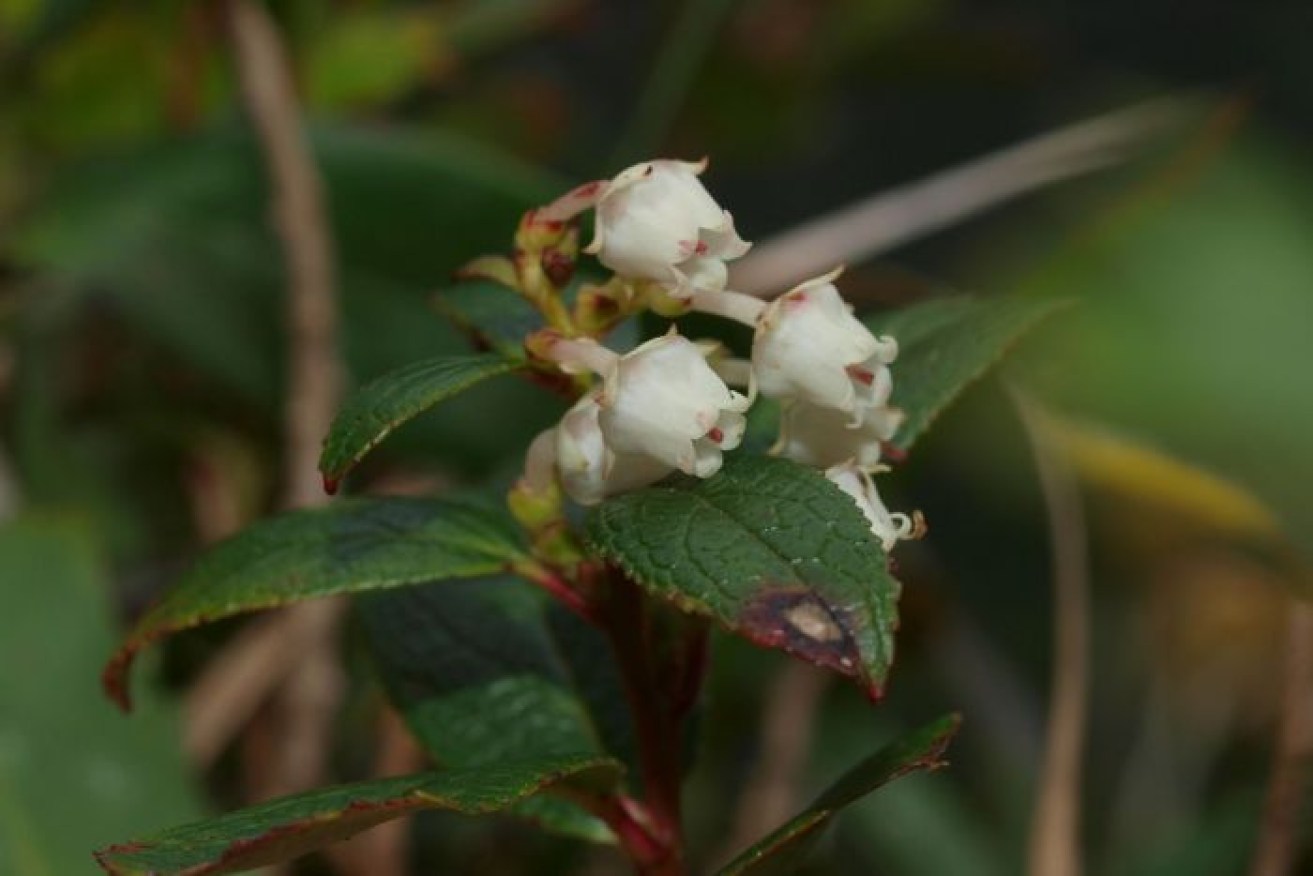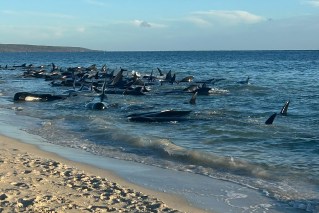Abseiling botanists discover rare plants growing on cliff face in Limpinwood Nature Reserve


A close-up image of the pink flowers on the rare Green Waxberry plant. Photo: Office of Environment and Heritage
Botanists from the NSW National Parks and Wildlife Service are going to great heights to identify and record some of the rarest plants in the country.
Some of the species are only known to exist along one escarpment within the Gondwana Rainforests of Australia World Heritage area on the New South Wales-Queensland border.
A special conservation permit was required to allow a botanist to abseil down a cliff face and conduct a threatened species assessment.
Saving Our Species project officer Justin Mallee said the effort was justified when nearly 1000 rare green waxberry (Gaultheria viridicarpa) plants were discovered in the Limpinwood Nature Reserve.
“We knew a handful of these very rare plants existed along the top of the cliff line, but what we didn’t know was how many plants were growing on the cliff faces, or their condition,” Mr Mallee said.

The flowers of the Lamington Eyebright plant. Photo: Office of Environment and Heritage
“The mossy cliffs of Limpinwood Nature Reserve are the only place in the world where these plants are found. So the discovery of a bigger population is fantastic news for this threatened species and really boosts this plant’s chance of long-term survival.”
The survey also revealed a thriving colony of lamington eyebright (Euphrasia bella). Mr Mallee said the species was last known as a small population of only five plants, recorded in 1982.
“Ninety-four lamington eyebright plants were counted [recently] … a huge boost to our knowledge of this population,” he said.
Some of these sites take a good six hours or so to walk into, so there’s not often people there looking for them. They’re in some very hard to get to places.”
The aim of the survey was to document the extent of the populations of the threatened plants, assess their habitat condition, and record potential threats.
Mr Mallee said the biggest threat was climate change, due to the plants’ location in a fragile, high-altitude environment.
“These plants have existed for thousands and thousands of years and to be able to know a bit more about them … it gives us some hope that we’ll be able to manage their environment in such a way that they’ll persist for thousands of years into the future.”
-ABC








